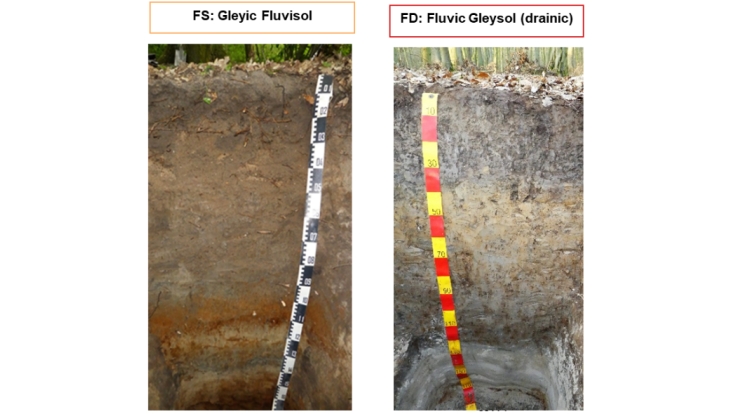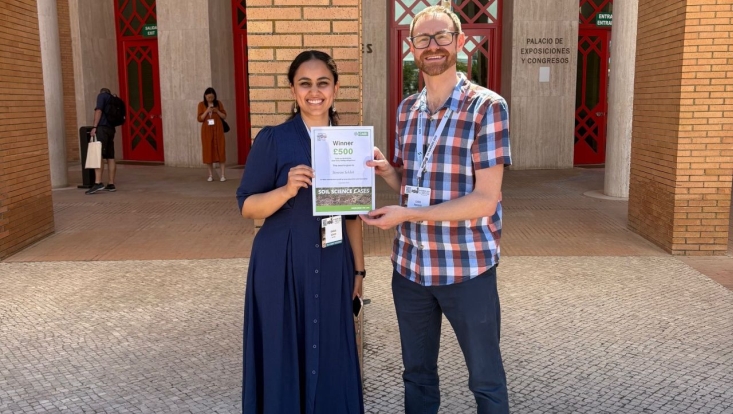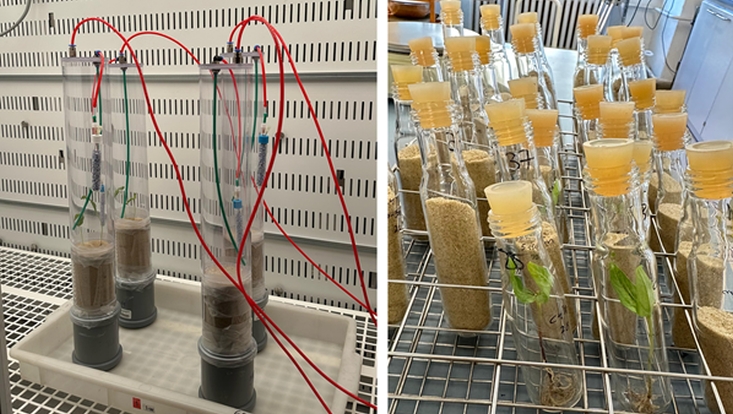Bodeneigenschaften von Auenböden der unteren Mittelelbe
14. Dezember 2022, von Anne Brockmann

Foto: Institut für Bodenkunde
Lizeth Vásconez Navas, Joscha Becker, Adrian Heger, Alexander Gröngröft und Annette Eschnbach haben in CATENA die Publikation "Are active and former floodplain soils of the lower middle Elbe similar? A study of soil characteristics and possible implications for forest restoration" veröffentlicht.
Abstract:
The analyses of soil properties and processes under the consideration of the spatial complexity of floodplains is a key step in the preparation of floodplain restoration measures. In that context, we analyzed how hydrogeomorphology influences soil physicochemical properties and formation processes in hardwood floodplain forests at the local scale. Our analyses are based on, 44 mixed topsoil samples, 135 soil drillings (2.0 m depth) and 18 reference pits (1.6 m depth) distributed in 44 hardwood floodplain forests along 150 km of the middle Elbe River. We considered four hydrogeomorphic units (HGUs) along a lateral floodplain gradient. Two HGUs located in the active floodplain and defined by their morphology Active High (AH), and Active Low (AL), and two located in the former floodplain: seepage water influenced (FS), and disconnected from the river hydrology (FD). Our results indicate that the HGUs in the active floodplain benefit from a stronger connection to the river hydrology. Higher pHCaCl2 values in the active HGUs as well as expected higher total P contents due to river deposition result in increased phosphorous availability. Physicochemical parameters as lower pHCaCl2 and predominance of iron mottling found in the FD indicate increased P sorption, therefore lower Psol availability. However, HGUs in the former floodplain, particularly those disconnected from the river hydrology, are characterized by higher total carbon and nitrogen content. These results improve our understanding of the soil physicochemical dynamics and their interactions in the different hydrogeomorphic units, and could allow the evaluation of floodplain restoration measures based on soil nutrient distribution to increase the potential of restored forests to develop on the selected geographic setting.
Zum Artikel kommen Sie hier.


